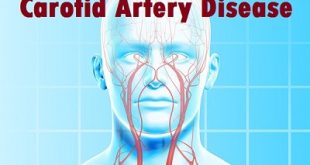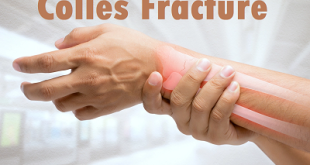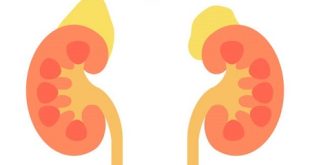Introduction
Cholesterol is a white, waxy, fatty substance. It is made in the liver and released into the bloodstream. You can also get cholesterol from the food you eat. It is a type of fat found in the bloodstream. Your body needs some cholesterol to work effectively. Cholesterol has many good uses, but is a problem when there is too much of it in the blood.
Types
HDL
- High-density lipoprotein (HDL) cholesterol is sometimes called good cholesterol.
- HDL protects you against heart disease by carrying the extra cholesterol out of your arteries, which lowers your chance of having a heart attack or stroke.
- The more HDL you have, the better. Exercise can also increase your good cholesterol.
LDL
- Low-density lipoprotein (LDL) cholesterol is sometimes called bad cholesterol.
- LDL leads to a build-up of bad fat in the artery walls, which can lead to chest pain, heart disease, heart attack, stroke, and kidney and circulation problems.
Triglycerides
- Triglycerides are often present in people who have diabetes or alcoholism. They increase the risk of heart disease.
Total Cholesterol
The total blood cholesterol is a measure of LDL cholesterol, HDL cholesterol, and other lipid components. Doctor will use your total cholesterol number when determining your risk for heart disease and how best to manage it.
Cholesterol chart for adults
According to the National Heart, Lung, and Blood Institute, these are the acceptable, borderline, and high cholesterol and triglyceride measurements for adults. All values are in mg/dL (milligrams per deciliter).
| Total cholesterol | HDL |
LDL |
Triglycerides | |
| Good | Less than 200 | 40 or higher | Less than 100 | Less than 149 |
| Borderline | 200–239 | n/a | 130–159 | 150–199 |
| High | 240 or higher | n/a | 160 or higher | 200 or higher |
| Low | n/a | less than 40 | n/a | n/a |
Cholesterol in children
Children who are physically active, have a healthy diet, aren’t overweight, and don’t have a family history of high cholesterol are at a lower risk for having high cholesterol. Following are the recommended cholesterol levels for children according to the National Institutes of Health (NIH). All values are in mg/dL (milligrams per deciliter).
| Total cholesterol | HDL |
LDL |
Triglycerides | |
| Good | 170 or less | 45 or higher | 110 or less | less than 75 in children 0–9; less than 90 in children 10–19 |
| Borderline | 170–199 | 40-45 | 110–129 | 75-99 in children 0–9; 90–129 in children 10–19 |
| High | 200 or higher | n/a | greater than 130 | 100 or more in children 0–9; 130 or more in children 10–19 |
| Low | n/a | less than 40 | n/a | n/a |
What Is High Blood Cholesterol?
High blood cholesterol is a condition in which you have too much cholesterol in your blood. By itself, the condition usually has no signs or symptoms. Thus, many people don’t know that their cholesterol levels are too high. People who have high blood cholesterol have a greater chance of getting coronary heart disease, also called coronary artery disease.
The higher the level of LDL in your blood, the GREATER your chance is of getting heart disease. The higher the level of HDL in your blood, the LOWER your chance is of getting heart disease.
Coronary heart disease is a condition in which plaque (plak) builds up inside the coronary (heart) arteries. Plaque is made up of cholesterol, fat, calcium, and other substances found in the blood. When plaque builds up in the arteries, the condition is called atherosclerosis.
What causes high cholesterol?
Foods high in saturated and trans fat increase cholesterol levels. Saturated and trans fats are found mainly in:
- Fatty meats
- Full cream dairy products (e.g. milk, cream, cheese and butter)
- Deep-fried take-away foods
- Baked products (e.g. biscuits and pastries)
- You should limit the amount of foods you eat that contain saturated and trans fats.
- Being overweight or obese can also lead to higher blood LDL levels.
- Genetics can contribute to high cholesterol – very high LDL levels are found in the inherited condition familial hypercholesterolemia.
- Abnormal cholesterol levels can also arise due to other conditions, including:
- Diabetes
- Liver or kidney disease
- Polycystic ovary syndrome
- Pregnancy and other conditions that increase levels of female hormones
- Underactive thyroid gland
- Drugs that increase LDL cholesterol and decrease HDL cholesterol (progestins, anabolic steroids, and corticosteroids)
Risk factors
- Diet. Saturated fat and cholesterol in the food you eat make your blood cholesterol level go up.
- Weight. Being overweight is a risk factor for heart disease. It also tends to increase your cholesterol.
- Physical Activity. Not being physically active is a risk factor for heart disease.
- Age and Gender. As women and men get older, their cholesterol levels rise.
- Heredity. Your genes partly determine how much cholesterol your body makes.
- Cigarette smoking
- High blood pressure (140/90 mmHg).
Signs and symptoms
Having high cholesterol levels, while a risk factor for other conditions, does not itself present any signs or symptoms. Unless routinely screened through regular blood testing, high cholesterol levels will go unnoticed and could present a silent threat of heart attack or stroke.
Effects of High level cholesterol in blood
- Stroke
- Coronary heart disease
- High blood pressure
- Chest pain
Historical background of cholesterol
- In 1758, French Doctor Francois Poulletier de La Salle isolated solid cholesterol from gallstones.
- In 1815, French chemist Michel Eugene Chevreul isolated and purified sterol from gallstones. And he named it as “cholesterol.”
- In 1927, Wieland & Adolf Windaus got Nobel Prize for cholesterol & bile acids structure. In 1932, Adolf Windaus clarified the structure of cholesterol.
- In 1964, Dr. Konrad Bloch received the Nobel Prize for explaining the cholesterol synthesis. He showed HMG-CoA reductase was the enzyme in this complex synthesis. The cholesterol serves as a precursor for bile acids, sex hormones, and cortisol. Konrad Bloch and Feodor Lynen awarded Nobel Prize for cholesterol and fatty acids metabolism.
- Japan physicians warned low cholesterol has a link with stroke. Stroke is the number one cause of death in Japan.
- In 1852, Irish Physician Richard Quain observed fatty material deposition in the blood vessels.
- In 1854, Dr. Rudolf Virchow described atherosclerosis as a disease. He considered arterial clog is due to excess cholesterol deposition.
- In 1951, Doctors David Barr, Edward Russ & Howard Eder analyzed heart patient’s heart. They found heart patients have elevated LDL and decreased HDL levels.
- In a 10-year study, Gofman and colleagues studied ischemic heart disease patients. They found lower HDL and higher levels of LDL, IDL, and small VLDL.
- In 1975-1980, studies found elevated LDL-C & decreased HDL-C are independent heart disease predictors.
Diagnosis of Cholesterol level
Doctor will diagnose high blood cholesterol by checking the cholesterol levels in blood. A blood test called a lipoprotein panel can measure your cholesterol levels. Before the test, you’ll need to fast (not eat or drink anything but water) for 9 to 12 hours.
The lipoprotein panel will give your doctor information about:
- Total cholesterol.
| Total Cholesterol Level | Total Cholesterol Category |
| Less than 200 mg/dL | Desirable |
| 200–239 mg/dL | Borderline high |
| 240 mg/dL and higher | High |
- LDL cholesterol.
| LDL Cholesterol Level | LDL Cholesterol Category |
| Less than 100 mg/dL | Optimal |
| 100–129 mg/dL | Near optimal/above optimal |
| 130–159 mg/dL | Borderline high |
| 160–189 mg/dL | High |
| 190 mg/dL and higher | Very high |
- HDL cholesterol.
| HDL Cholesterol Level | HDL Cholesterol Category |
| Less than 40 mg/dL | A major risk factor for heart disease |
| 40–59 mg/dL | The higher, the better |
| 60 mg/dL and higher | Considered protective against heart disease |
- Triglycerides: If your triglyceride level is borderline high (150–199 mg/dL) or high (200 mg/dL or higher), you may need treatment.
Treating procedures to reduce high cholesterol levels
Therapeutic lifestyle changes
The good news is that lifestyle changes are effective in helping you reduce cholesterol levels. They’re also fairly straightforward and can be done at any age.
- Exercise: Physical activity helps you lose weight and boosts your HDL levels. Aim for 30 to 60 minutes a day of moderate cardio.
- Eat more fiber: Replace white breads and pastas with whole grains.
- Eat healthy fats: Olive oil, avocado, and nuts all have fats that won’t raise your LDL.
- Limit cholesterol intake: Reduce the amount of high-saturated fat foods like cheese, whole milk, and high-fat red meats.
- Quit smoking.
Medications
Drug treatment for an individual with hypercholesterolemia will depend on their cholesterol level and other risk factors. Diet and exercise are the first approaches used to reduce cholesterol levels. Statin treatment is normally prescribed for people with a higher risk of heart attack.
- Statins are the leading group of cholesterol-lowering drugs; others include selective cholesterol absorption inhibitors, resins, fibrates, and niacin. The statins available on prescription in the United States include:
- Atorvastatin (brand named Lipitor)
- Fluvastatin (Lescol)
- Lovastatin (Mevacor, Altoprev)
- Pravastatin (Pravachol)
- Rosuvastatin calcium (Crestor)
- Simvastatin (Zocor)
- Bile acid sequestrants also help lower LDL cholesterol. These medicines usually aren’t prescribed as the only medicine to lower cholesterol. Sometimes they’re prescribed with statins.
- Nicotinic acid lowers LDL cholesterol and triglycerides and raises HDL cholesterol. You should only use this type of medicine with a doctor’s supervision.
- Fibrates lower triglycerides, and they may raise HDL cholesterol. When used with statins, fibrates may increase the risk of muscle problems.
- Ezetimibe lowers LDL cholesterol. This medicine works by blocking the intestine from absorbing cholesterol.
Prevention
- Strive for daily intake of less than 7% of your calories from saturated fat and less than 200 mg of cholesterol from the food you eat.
- You may eat up to 30% of your calories from total fat, but most should be from unsaturated fat, which doesn’t raise the levels.
- Add more soluble fiber (found in cereal grains, beans, peas, and many fruits and vegetables) and foods that contain plant stanols and sterols (included in certain margarine and salad dressings) to boost your LDL-lowering power. The best way to know what’s in the foods you eat is to read the nutrition label.
- Lower cholesterol levels start at the grocery store. Read food labels, and buy foods low in saturated fat and low in cholesterol.
- Work with your health-care professional to determine whether medication is needed to control high cholesterol.
 Diseases Treatments Dictionary This is complete solution to read all diseases treatments Which covers Prevention, Causes, Symptoms, Medical Terms, Drugs, Prescription, Natural Remedies with cures and Treatments. Most of the common diseases were listed in names, split with categories.
Diseases Treatments Dictionary This is complete solution to read all diseases treatments Which covers Prevention, Causes, Symptoms, Medical Terms, Drugs, Prescription, Natural Remedies with cures and Treatments. Most of the common diseases were listed in names, split with categories.








what I suppose to take to reduce Pat
Do enough Physical exercise daiy to reduce cholestrol. The most important thing is low fat diet. Please consult with dietitian to know about your everyday diet chart.
do i need to get a blood test I have highpertenion and it’s high n my family
of course, you should get tested for hypertension and get consulted with a doctor.
do i need to get a colesterel test
If your age is above 40 please check your BP level and eventually your cholesterol level.
Iam 23 yrs old women and now32 weeks pregnent my cholestrol level is 274mg/dl what can i do?
Please consult a doctor, to get the suggestions.
pls let me knw hw to improve HDL levels
Here are nine healthy ways to raise your “good” HDL cholesterol.
Consume olive oil
Follow a low-carb or ketogenic diet
Exercise regularly
Add coconut oil to your diet
Stop smoking
Lose weight
Choose purple produce
Eat fatty fish often
foods to increase hdl levels
Start incorporating the following Mediterranean-style and HDL-friendly foods into your daily diet.
Olive oil. The type of heart-healthy fat found in olives and olive oil can lower the inflammatory impact of LDL cholesterol on your body.
Beans and legumes
Whole grains
High-fiber fruit
Fatty fish
Flax
Nuts
Chia seeds